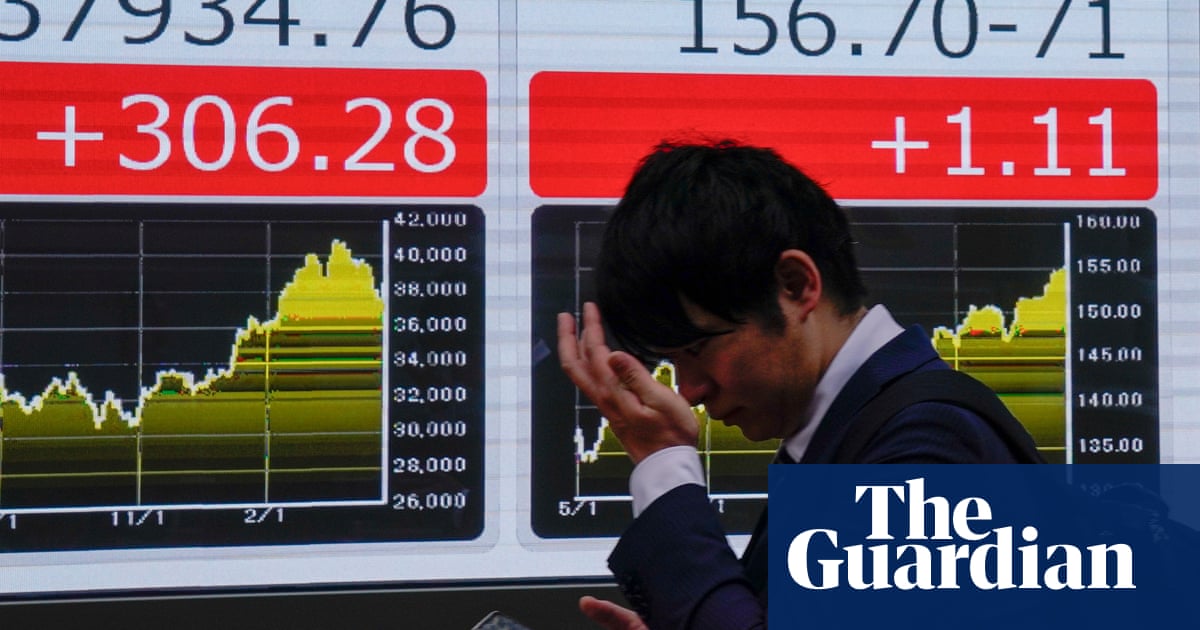Achi news desk-

The value of Japan’s currency has fallen so much, that its value is back to what it was in 1990, shortly after Japan’s famous “bubble economy” burst. For a moment on Monday it was trading at 160 yen to US$1. A few years ago, it was closer to 100 yen to US$1.
Ultimately, the yen’s accelerating slide could be bad news for people in Japan. A weaker yen squeezes households by increasing import costs. Japan is highly dependent on imports for energy and food supplies, which means inflation could rise.
However, a weaker yen is a boost to Japanese exporters’ profits – and to tourists visiting Japan who see their money go further.
Why has the yen fallen so far?
The Yen has been sliding steadily for more than three years, losing more than a third of its value since the start of 2021.
One factor behind its fall is momentum: the Yen is falling because investors are selling it – and investors are continuing to sell it because it is falling. In such cases, the market enters a self-fulfilling loop.
As a result of the drop in the currency, exporters are encouraged not to convert foreign earnings into yen, further reducing demand.
However, there are also major policy reasons for the currency’s sudden decline.
For years, the Bank of Japan (BOJ) has kept interest rates extremely low to encourage more inflation in its economy, as well as to boost bank lending and stimulate demand.
In February, faced with widespread labor shortages and a weakening yen, Japan was overtaken by Germany as the world’s third largest economy and slipped into recession.
With low interest rates seen as a key factor in the yen’s rapid decline, last month the BOJ ended its policy of keeping its benchmark interest rate below zero, raising its short-term policy rate from -0.1% to between zero and 0.1%.
After that decision, markets then focused on the pace of further rate hikes. On Friday, the BOJ announced that it would keep interest rates steady, indicating that further increases were not imminent. This led to another round of selling in the Yen, putting more pressure on the currency.
This wave of selling drove the currency down to 160 yen to the dollar for the first time since 1990.
What effect does it have?
The yen’s decades-low value means tourist dollars are going further than they have for generations, leading to a boom in the industry. As well as the US dollar, the yen has also hit multi-year lows against the euro, the Australian dollar and the Chinese yuan – all strong tourism markets for Japan.
In February, Japan recorded 2.79 million visitors – a record for the month.
However, domestic consumption remains a major weak point. Households tend to be net importers and face higher prices due to the weak yen.
The weakening yen is also a factor in the decision by large Japanese investors to keep their money abroad, where it can earn better returns. This trend is exacerbated by an unusually strong US dollar which has meant that American investments and assets offer much better returns to large financial institutions.
What are the Japanese authorities doing?
In recent years, the Japanese authorities have intervened to maintain the value of the currency, because a weak yen complicates its objective of achieving sustainable inflation, and strengthening it could help increase domestic consumption and local investment.
Japan intervened in the currency market three times in 2022, selling the US dollar it holds in reserve in order to buy yen. It is estimated that Tokyo spent around $60bn defending the currency at that time.
On Monday, after briefly hitting a multi-decade low, the yen rose sharply, leading traders to suspect that Japan has stepped in to support its currency after weeks of threatening to intervene.
Japan’s top currency diplomat, Masato Kanda, declined to comment when asked whether authorities in Tokyo had intervened.
“Today’s move, if it represents intervention by the authorities, is unlikely to be a one-and-done move,” said Nicholas Chia, Asia macro-strategist at Standard Chartered Bank in Singapore.
“I guess we can expect more of a follow-up [Japan’s Ministry of Finance] if the dollar/yen pair travels to 160 again. In a sense, the 160 level represents the pain threshold, or a new line in the sand for the authorities.”
Reuters contributed to this report
Ad blocking test (Why?)





Source link
Related

